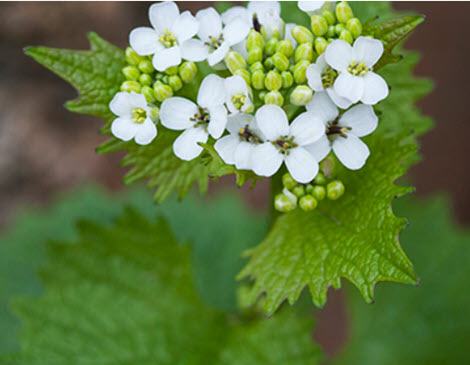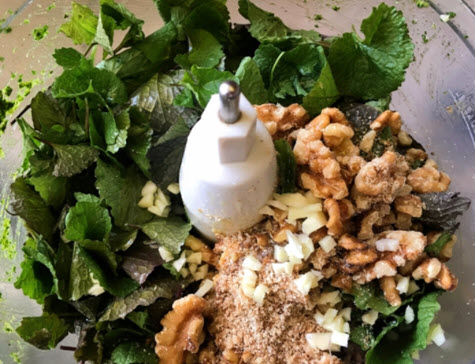Click below to listen to my 2 min. Garden Bite radio show: Garlic Mustard, an invasive with value?
Garlic mustard, a weed or an herb? Or both? Garlic mustard was first introduced as a garden herb but escaped and has been causing problems ever since.

An herbaceous plant, it takes two years to reach maturity. The chemicals in garlic mustard reduce the growth of neighboring plants, so when it’s introduced to a site it can quickly outcompete native understory vegetation. It can thrive in fully intact forests. No good for those of us in Minnesota and Wisconsin!

It’s also prolific and seed producing. Each 2 to 4 ft. tall plant can produce up to 100 seeds which can remain viable for up to 7 years. EEK.
So what about the “herb” part. Since it was introduced as a garden herb, it’s obviously edible and, according to the U of M extension, makes great pesto and soup. Foraging for garlic mustard and how to use it from vintagekitchenvixon.

Check out these recipes from the Wisconsin Land Conservation. As they say, “Eat it to beat it”. University of Minnesota Extension has several resources to help you think about long-term invasive species and garlic mustard management, including a great publication on how to prioritize species and how to organize a removal event.
Early May is the best time, but this will give you information on the plant and many ideas for next year!
It amazes me at how many “weeds” are really tasty and can be managed to a certain degree.
More from Nature.org on garlic mustard and eattheweeds.com
